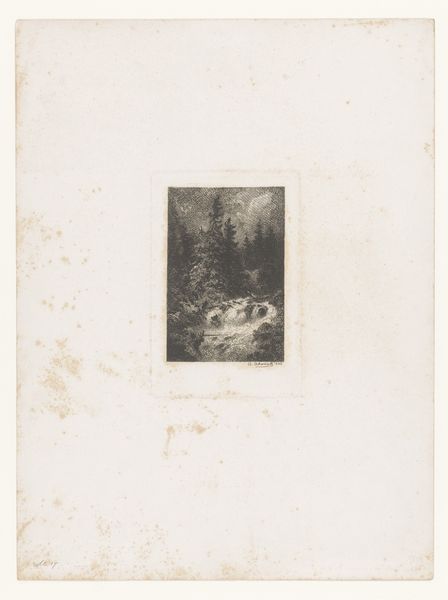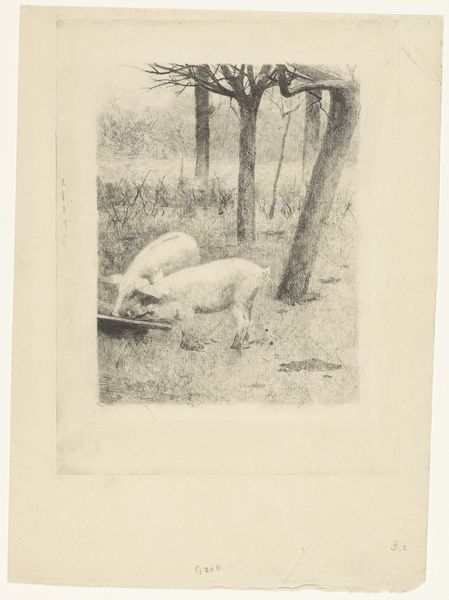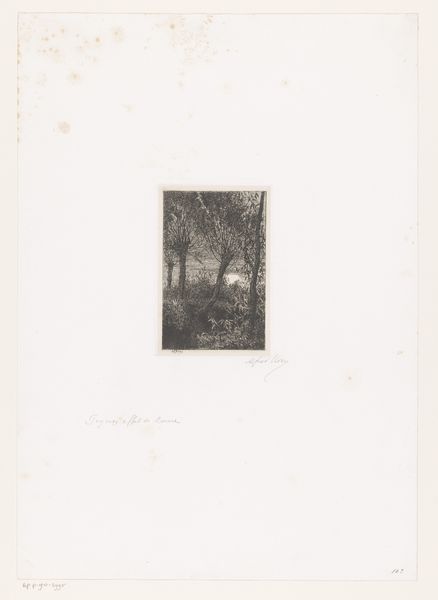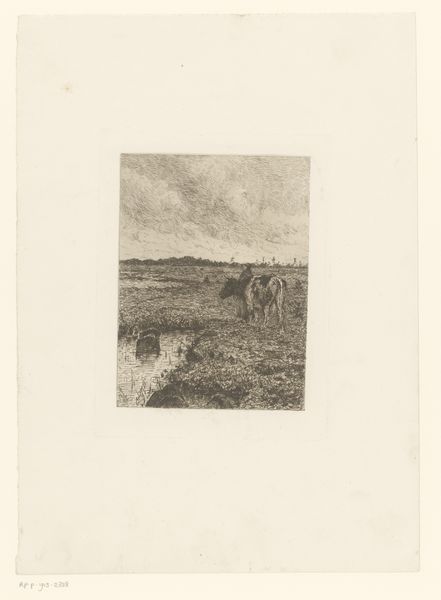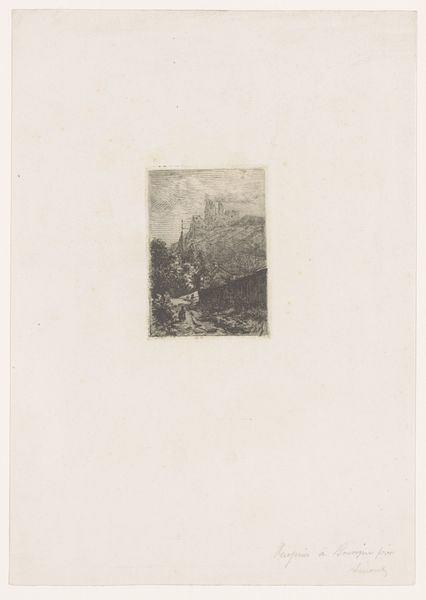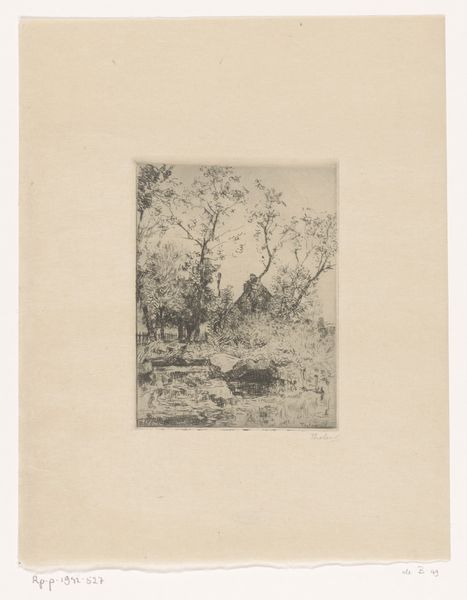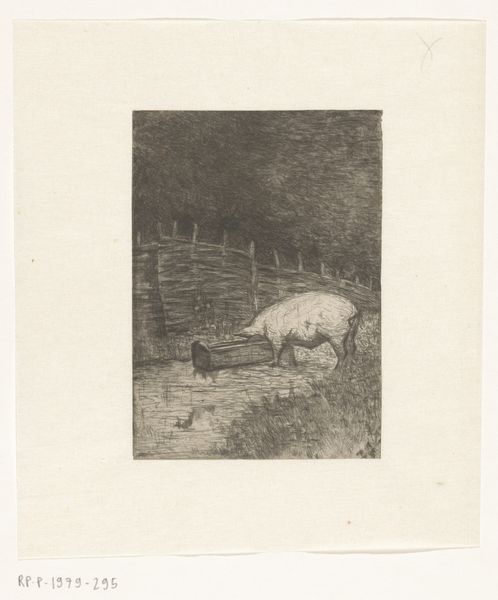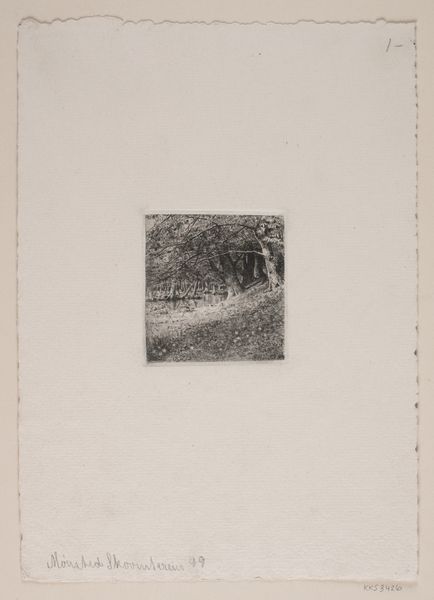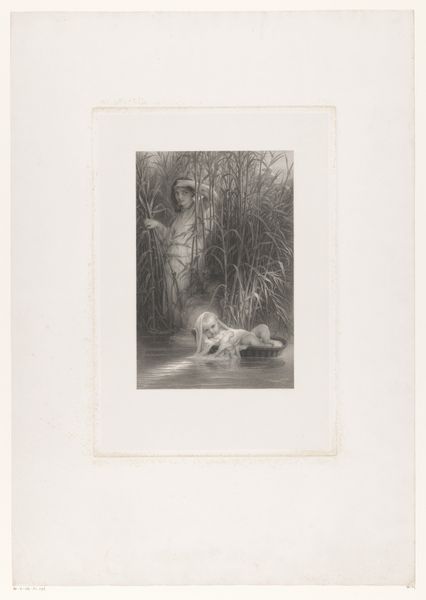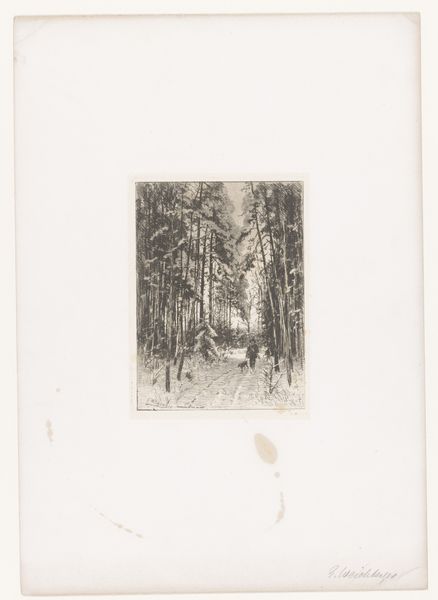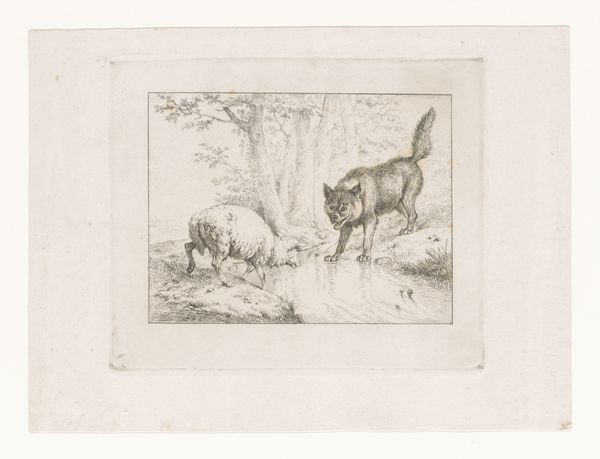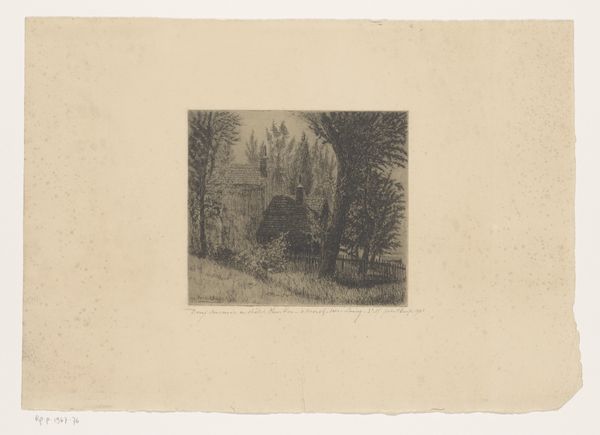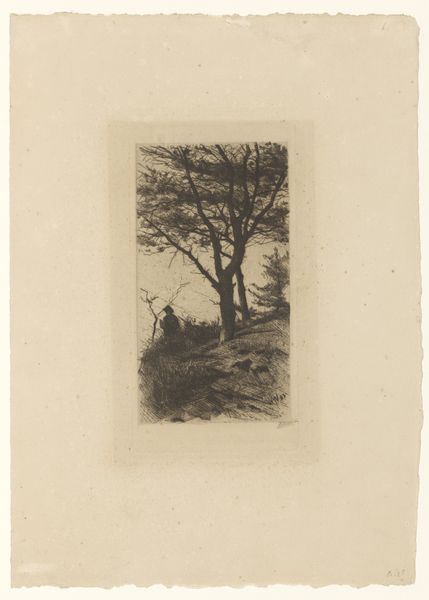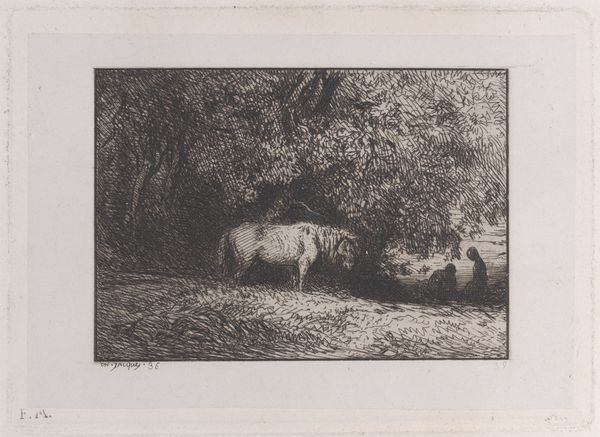
drawing, print, etching, paper
#
pencil drawn
#
drawing
# print
#
etching
#
landscape
#
paper
#
genre-painting
Dimensions: height 140 mm, width 100 mm
Copyright: Rijks Museum: Open Domain
Curator: This small, almost pocket-sized etching is titled "Big die eet uit een trog," which translates to "Pig eating from a trough." It's the work of Richard Nicolaüs Roland Holst, created in 1886. It's currently held here at the Rijksmuseum. Editor: Immediately, I'm struck by how dark it is, but not in a dismal way. The high contrast and textures are the work's dominant feature, even overwhelming the figure itself. It gives the entire scene a feeling of subdued, rural quietude. Curator: Precisely. While seemingly simple, it carries several potent symbolic meanings. The pig itself is a paradoxical symbol. In some contexts, it represents prosperity and abundance. Yet, conversely, it may also denote gluttony, lack of control, and uncleanliness. Editor: You are saying the symbol evokes diverse psychological states depending on the cultural environment and viewers disposition, yet for a work of this size, the execution feels somewhat rudimentary. Look at how the dense vertical hatching dominates everything, reducing form to value alone, even negating linear values entirely. Curator: It does not negate them entirely, and it's true that the seemingly rudimentary style only strengthens the underlying sentiment: perhaps evoking the inherent dignity found even in mundane, simple moments. The pig's act of nourishment is a reminder of nature’s cycles, echoing primal needs. Editor: Possibly. From a purely structural view, however, the fence cuts a sharp, decisive line in the picture plane. This line is further accentuated by the overall monochrome rendering, thus intensifying the contrast against the dark mass of trees. A classic division, that speaks as much about surface as the potential depths beneath it. Curator: The fence as a visual element separating civilization and the wild might certainly contribute to the emotional complexity of the composition. Editor: The balance achieved between line and tone is intriguing. The scene seems to possess the characteristics of fleeting immediacy due to its direct style. This effect emphasizes its modernity. Curator: Ultimately, the artist leaves us to reconcile the opposing cultural meanings within ourselves. A humble yet engaging reflection on consumption, sustenance, and our own primal natures, as observed through the actions of an animal. Editor: Yes, whether intentional or accidental, Holst crafted a deceptively simple work whose richness lives in the interplay between composition, materials, and that little animal consuming its feed.
Comments
No comments
Be the first to comment and join the conversation on the ultimate creative platform.
